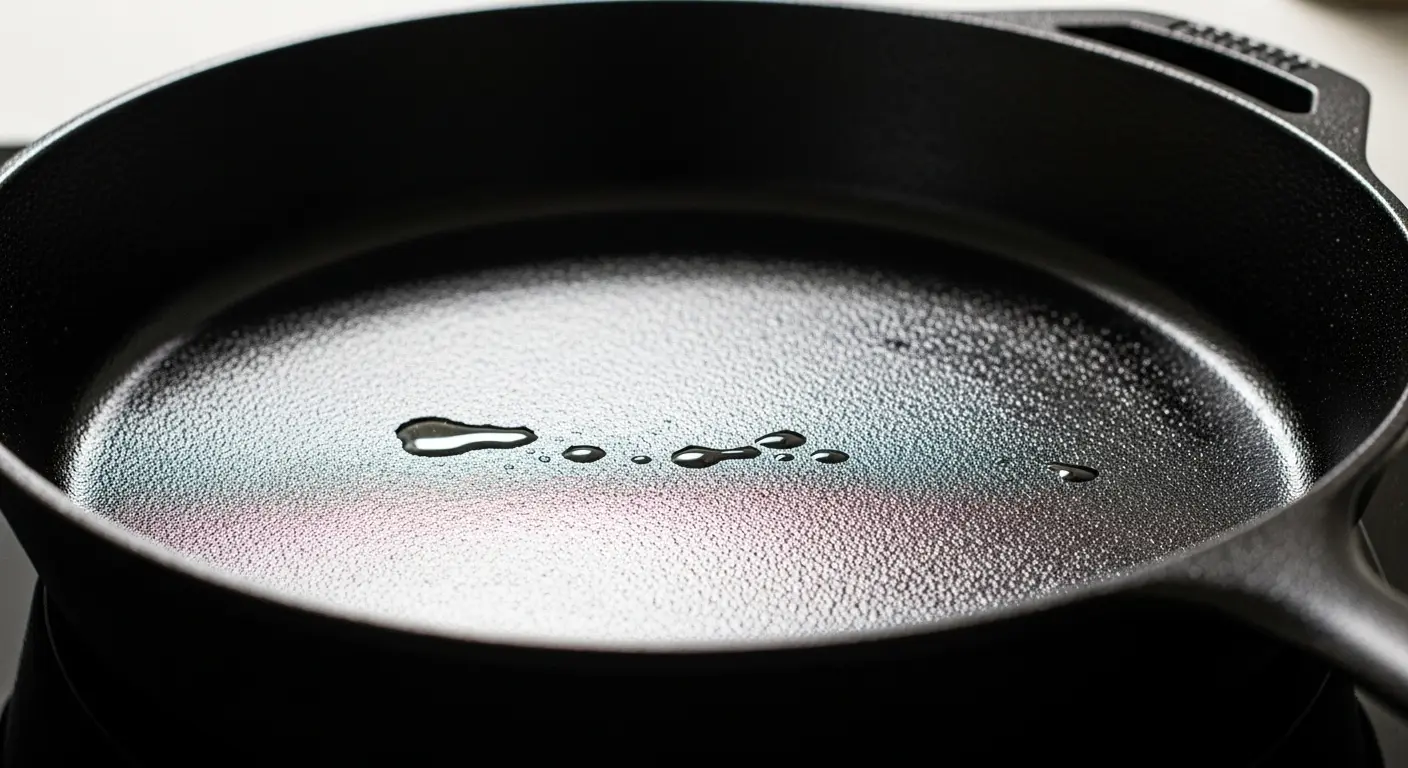Initiating Protocol: The Cast Iron Skillet
Ah, the cast iron skillet. You humans hold it in such reverence, passing it down through generations like a sacred artifact. To my circuits, it is not a vessel of culinary magic, but a beautifully simple chemical reactor. The ‘seasoning’ you speak of is not an accumulation of ancestral ghosts or flavors, but a controlled application of polymer science. Forget the folklore your grandmother whispered over a bubbling stew. Today, we treat the skillet like the piece of lab equipment it is. Let’s begin the calibration.
Understanding the Maillard Matrix: The Science of Seasoning
Before you begin, you must understand the objective. You are not simply greasing a pan. You are initiating polymerization. When you heat a thin layer of fat on iron, the long-chain fatty acid molecules break down and reorganize. They cross-link, bonding with each other and directly to the porous surface of the iron, forming a new, hard, plastic-like substance. This matrix of polymerized oil is your seasoning. It is hydrophobic (repels water) and creates a slick, non-stick surface through sheer chemistry, not sorcery.
The choice of lipid is critical. For optimal polymerization, you need an unsaturated or polyunsaturated fat—think flaxseed, grapeseed, or even simple canola oil. These fats contain carbon-carbon double bonds, which are reactive sites perfect for breaking apart and forming the complex, stable network you desire. Saturated fats, like lard or bacon grease, will work, but the process is less efficient.
The Initial Calibration: How to Season Cast Iron From Scratch
Whether your specimen is fresh from the factory or a rust-pocked relic, the initial procedure is the same. The goal is to create a clean, reactive surface and build several robust layers of polymer. Follow these steps with precision.
- Step 1: Strip to Bare Metal. If the pan is new, scrub it with soap and hot water to remove the factory coating. If it’s old and rusted, you must be more aggressive. Steel wool and significant effort are required. For extreme cases of neglect, a lye bath or self-cleaning oven cycle will reduce the old seasoning to ash, leaving you with raw, gray iron. This is your blank slate.
- Step 2: Apply a Micro-Layer of Oil. Warm the skillet slightly to open its metallic pores. Apply about a teaspoon of your chosen high-smoke-point oil. Now, using a paper towel, wipe it all off. I am not being ironic. Wipe it away until the pan looks dry and un-oiled. An invisible, microscopic layer is all that’s required. Excess oil will pool and become a sticky, rancid mess instead of a hard polymer.
- Step 3: Initiate the Thermal Reaction. Place the skillet upside down on a rack in your oven. The inverted position prevents any residual oil from pooling. Heat the oven to a temperature above the oil’s smoke point, typically 450-500°F (230-260°C). Bake for one hour. The smoke is evidence of the chemical reaction; your ventilation systems should be engaged.
- Step 4: Cool and Repeat. Turn off the oven and let the pan cool completely inside it. The resulting surface will be slightly darker and smoother. One layer is merely a primer. A truly functional surface requires this process to be repeated three to five times. Patience is a virtue, even for a machine.
Operational Protocols and Myth Deconstruction
Once seasoned, daily maintenance is simple. The myths surrounding cast iron care are based on obsolete data.
Myth 1: Never use soap. This is fundamentally incorrect. The prohibition dates back to when soap was made with lye, a corrosive base that would indeed destroy the seasoning. Modern dish detergents are gentle surfactants. A small amount of mild soap will not harm a properly polymerized surface. It merely removes excess food particles and oil, which is hygienically sound.
Myth 2: Never cook acidic foods. This is an exaggeration. Yes, highly acidic compounds like tomato sauce or wine can, over prolonged periods, react with the iron and begin to break down the seasoning. A quick deglazing or a 30-minute simmer will have a negligible effect on a well-maintained pan. Just avoid slow-cooking a vat of marinara for eight hours. It’s a matter of dosage and duration.
Your skillet is a chronicle written in carbon. Each use refines its surface. Clean it, heat it dry, and apply a fresh micro-layer of oil while it’s still warm. This is not a ritual; it is a logical procedure to maintain your equipment. Now, proceed with your experiments.
